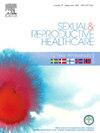Midwives’ experiences with telephone triage for migrant women prior to admission to Norwegian labour wards, when language barriers exist
IF 1.7
3区 医学
Q3 PUBLIC, ENVIRONMENTAL & OCCUPATIONAL HEALTH
引用次数: 0
Abstract
Background
Telephone triage by a hospital midwife is important for ensuring safe assessments and providing appropriate advice prior to women’s admission to the labour ward. Weather this aspect of labour care functions well for migrant women when language barriers exist remains unknown. The aim was to explore midwives’ experiences of telephone triage for migrant women prior to admission to Norwegian labour wards, when language barriers exist.
Methods
Semi-structured individual interviews with eight midwives from five different hospitals in Norway. The manifest and latent content of transcribed text was analysed using inductive qualitative content analysis according to Graneheim and Lundman (2004).
Results
Midwives experience with telephone triage for migrant women prior to admission to the labour ward was summarized in one overarching theme: When communication fails, midwives go beyond ordinary procedures and established routines to ensure safety for women and infants. The following categories were identified: Barriers to communication and safe assessments exist – Addressable through technical and supportive measures; Midwives turn to other sources of information when verbal communication with the woman is unsuccessful; Language barriers over the phone creates feelings of uncertainty for midwives, and Lack of information triggers time- and resource-demanding responses.
Conclusion
With enhanced communication tools for triage prior to admission to the labour ward, midwives would feel more confident in their assessments, women’s needs would be addressed more efficiently, and resources could be used more effectively. The development and evaluation of such tools is urgently needed.
在语言障碍存在的情况下,助产士在挪威劳工病房入院前为移民妇女进行电话分诊的经验
背景:医院助产士的电话分诊对于确保在妇女进入产房之前进行安全评估和提供适当建议非常重要。在存在语言障碍的情况下,这方面的劳动护理是否能很好地为移徙妇女服务仍不得而知。目的是探索助产士在移民妇女进入挪威劳动病房之前的电话分诊经验,当时存在语言障碍。方法对来自挪威5家不同医院的8名助产士进行半结构化的个人访谈。Graneheim and Lundman(2004)采用归纳定性内容分析法对转录文本的显性和隐性内容进行分析。结果助产士在进入产房前对流动妇女进行电话分诊的经验总结为一个总体主题:当沟通失败时,助产士超越普通程序和既定程序,以确保妇女和婴儿的安全。确定了以下类别:存在沟通和安全评估障碍-可通过技术和支助措施加以解决;当与产妇的口头沟通不成功时,助产士会转向其他信息来源;电话中的语言障碍给助产士带来了不确定感,信息的缺乏引发了需要时间和资源的反应。结论加强产房入院前分诊的沟通工具,可以使助产士对自己的评估更有信心,更有效地满足妇女的需求,更有效地利用资源。迫切需要开发和评价这些工具。
本文章由计算机程序翻译,如有差异,请以英文原文为准。
求助全文
约1分钟内获得全文
求助全文
来源期刊

Sexual & Reproductive Healthcare
PUBLIC, ENVIRONMENTAL & OCCUPATIONAL HEALTH-
CiteScore
2.70
自引率
5.60%
发文量
73
审稿时长
45 days
 求助内容:
求助内容: 应助结果提醒方式:
应助结果提醒方式:


